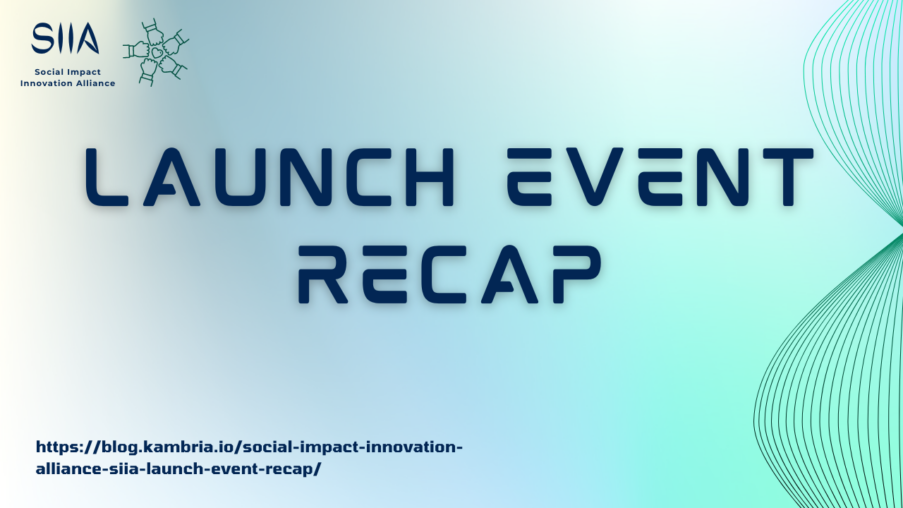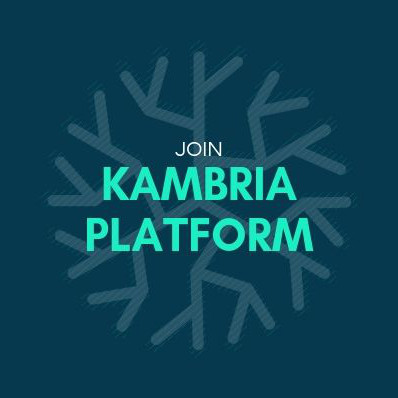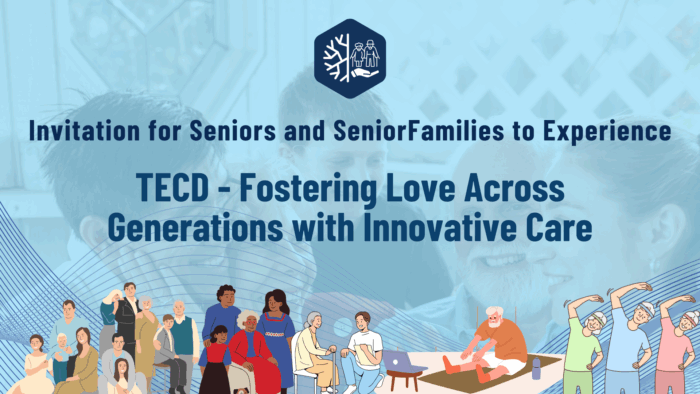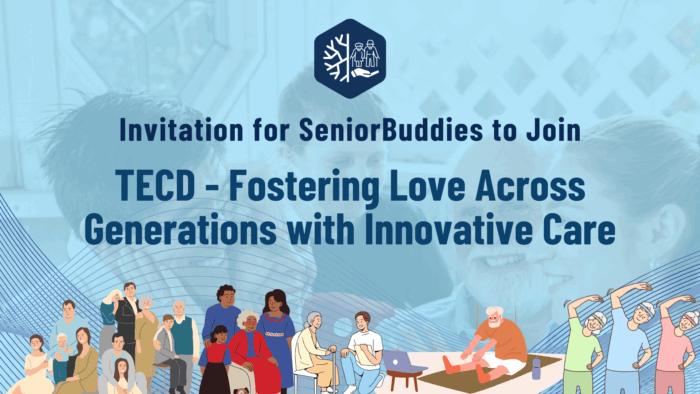Kambria successfully organized the Social Impact Innovation Alliance (SIIA) Launch Event on April 26th, 2024.
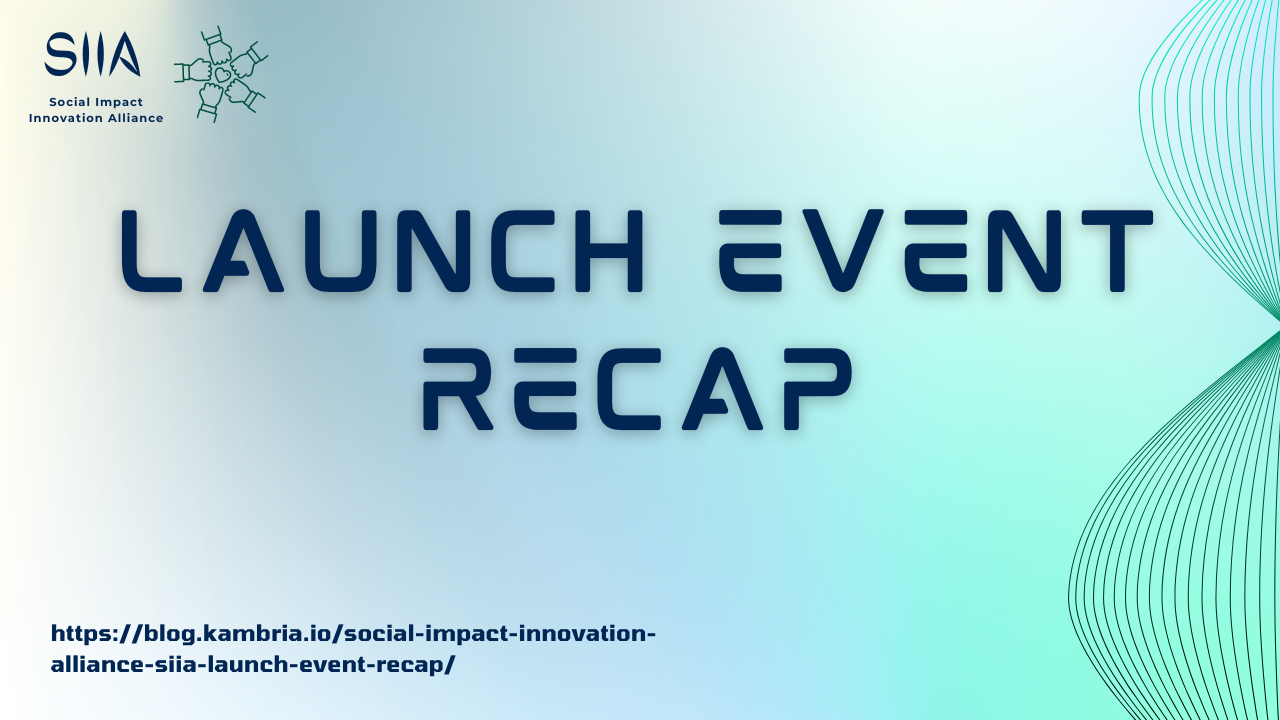
Through this Event, we would like to introduce the Alliance with insightful sharing from Member Projects. We are excited about bringing together like-minded individuals and organizations committed to driving positive change through innovative solutions. We are truly thankful for all Member Projects accompanying us on this amazing journey!
Table of Contents
- HIGHLIGHTS OF THIS EVENT:
- 1️⃣ Kambria Introduction about the SIIA and Partnership Invitation:
- 2️⃣ 3 sessions with the sharing from Member Projects and Q&A from the community:
-
Session 1: Social Impact Showcases
-
Speaker 1: Mr. Amit Saha from FoGS Global Research & Consultancy Centre - Topic: "Global Dairy farm tech innovations optimizing for local social impact"
- Presentation
- Q&As
- Q1: How do you ensure the AI-enabled platform for dairy farming technology selection aligns with the varying needs and technological capacities of farmers in less developed regions?
- Q2: Can you describe the most significant impacts of the Vocal-kisan hubs on local farming communities since their inception?
- Speaker 2: Mr. Gary Byrnes from TAO Climate - Topic: "How we plan to solve the climate crisis by building sustainable housing with industrial"
- Presentation
- Q&As
- Q1: How does your software platform enhance the efficiency of connecting carbon value creators with market demands, and what are the key challenges you face in scaling this technology?
- Q2: Could you describe how TAO Climate has successfully influenced policy changes at the national or international levels, and what strategies have been most effective in these efforts?
- Q3: How can individuals join or contribute to reducing CO2?
-
Speaker 1: Mr. Amit Saha from FoGS Global Research & Consultancy Centre - Topic: "Global Dairy farm tech innovations optimizing for local social impact"
- Session 2: Knowledge Sharing and Best Practices
-
Speaker 3: Ms. Madeleine Ndegeya Kazindu from Umubyeyi Elevate Ltd. - Topic: "UE's community activities impact"
- Presentation
- Q&As
- Q1: How does the Bespace platform integrate with traditional community engagement strategies to enhance the effectiveness of your maternal health programs?
- Q2: Why are the infant mortality rate and maternal mortality rate higher?
- Q3: I would love to hear from Umubyeyi Elevate a short story of when you encountered difficulties in training and education on maternal and child health safety.
-
Speaker 3: Ms. Madeleine Ndegeya Kazindu from Umubyeyi Elevate Ltd. - Topic: "UE's community activities impact"
- Session 3: Collaboration Ideas
-
Speaker 4: Mr. David Finkelshteyn from Pivotal-AI - Topic: "Transforming Animal Welfare: Leveraging Technology and Community for Shelter Dog Adoption"
- Presentation
- Q&As
- Q1: How does your approach to rapid MVP creation help clients validate their ideas quickly, and what key factors do you consider critical during this process?
- Q2: Could you elaborate on how the AI assistance matches a dog with an adopter? And the app is available now?
- Q3: Could the app be used for other animals like cow adoption/ purchase as well?
- Speaker 5: Mr. Tuấn Nguyễn from Vietnam Silicon Valley (VSV) Foundation - Topic: "VSV’s contribution to sustainable development of Vietnam by investing and accelerating startups"
-
Speaker 4: Mr. David Finkelshteyn from Pivotal-AI - Topic: "Transforming Animal Welfare: Leveraging Technology and Community for Shelter Dog Adoption"
-
Session 1: Social Impact Showcases
- 3️⃣ Minigame Announcement and Next Milestones
HIGHLIGHTS OF THIS EVENT:
The Event includes 3 key sections:
- Kambria Introduction about the SIIA and Partnership Invitation
- 3 sessions (Social Impact Showcases, Knowledge Sharing and Best Practices, Collaboration Ideas) with the sharing from Member Projects and Q&A from the community
- Minigame Announcement and Next Milestones
Full video: https://youtu.be/i9eAvxTWWII?si=13KLAaw_AN-LqLeD
- - - - - 🔹 - - - - -
1️⃣ Kambria Introduction about the SIIA and Partnership Invitation:
Ms. Lien Cao, CEO of Kambria, kicked off the Event by sharing the overview of Kambria and the SIIA.
Kambria Introduction:
Kambria is an open innovation platform dedicated to shaping the future of technology. Focused on deep tech areas such as AI, robotics, blockchain, AR, VR, and IoT, Kambria aims to democratize and decentralize technology in ownership, development, manufacturing, commercialization, and enforcement.
Kambria platform was launched in 2018 and since then, we have implemented 7 initiatives in which, with the Open Innovation Hubs, we aim to foster a global network to accelerate open innovation all around the world.
We have many excited partners coming from different sectors: developer communities, innovation sponsors, governments and incubation partners, R&D labs and universities, and an expert network. Collaboration is open to those who share our vision and roles, as we aim to become your trusted partner.
SIIA Introduction:
In the following section, Ms. Lien Cao shared more details about the Social Impact Innovation Alliance (SIIA).
On Kambria journey, we are grateful to have chances to connect with many inspiring projects and teams, so we came up with the idea to call for the community to come together in the SIIA, the joined forces of visionary projects and organizations dedicated to harnessing the power of innovation for positive social change.
Currently there are 18 member projects in the Alliance from different sectors including Green initiatives, Education, Healthcare, Technology.
Member projects in the alliance share common values including:
- Social Impact Innovation
We have a clear mission and commitment to creating positive social change through innovation. We aim to arrest social, environmental or economic challenges and make a tangible difference in people's lives.
- Ethical Practices
Member projects adhere to ethical standards and promote responsible and inclusive technology development
- Scalability and Sustainability
Member projects have the perspective to scale their impact and be financially sustainable in the long term.
- Collaboration and Partnership
We are willing to collaborate and actively participate in a community of like-minded organizations.
There are many activities that the community in this Alliance can do together such as Knowledge Sharing and Best Practices, Collaborative Research and Development, Funding and Grant Opportunities, Networking and Partnership, Community Events and Meetups, Social Impact Showcases, Challenges and Hackathons for Social Good, Volunteer Days, and Advocacy and Policy Engagement.
Ms. Lien concluded the presentation by informing the community about the Participation of the SIIA and Partnership Invitation. The Participation in this Alliance is in the spirit of openness:
- If your project is interested to participate, you can fill in the Sign-up form demonstrating how it aligns with the directions of the Alliance.
- Regarding activities: Member projects share proposals of programs & activities that they would like to host, other members can choose which activities they are interested in to join.
- Regarding communication channels: Information of member projects will be updated on SIIA page. And we will have a dedicated discussion channel in Kambria Discord for activities of the Alliance.
Rewatch at this link: https://youtu.be/uxIkSUm483c?si=GRC-liSL_3e6YzcP
***
2️⃣ 3 sessions with the sharing from Member Projects and Q&A from the community:
Kambria would love to share highlights from insightful sharings from our esteemed Member Projects in the Event:
Session 1: Social Impact Showcases
Speaker 1: Mr. Amit Saha from FoGS Global Research & Consultancy Centre - Topic: "Global Dairy farm tech innovations optimizing for local social impact"
FoGS Global Research & Consultancy Centre focuses on the Dairy sector such as economic research, policy analysis, and advice, and the Fresh Herbal sector like direct-to-home herb production.
Presentation
Mr. Amit Saha recently shared insights at the SIIA Launch Event, shedding light on the pressing need for global dairy farm technology innovations aimed at optimizing local social impact. His talk underscored the significance of this initiative in today's society.
Mr. Saha, representing FoGS Global, emphasized the company's commitment to driving India towards self-sufficiency, envisioning a transition from a developing to a developed nation by its 100th year of independence in 2047.
FoGS Global, a research and consultancy center founded in 2021, stands at the forefront of grassroots sustainability. Their mission is to catalyze sustainable transformations in global food and health livelihood systems through frontier technologies. Mr. Saha's extensive experience in the dairy sector, spanning over two decades globally, propelled him to address the glaring disparities in technology, wealth distribution, and inequity within the dairy industry.
Highlighting the stark contrast in income distribution, wealth, and productivity worldwide, he drew attention to the profound impact of innovation and mechanization on these disparities. Leveraging insights from organizations like the International Finance Corporation (IFC) and the Dairy Network, he outlined a case study demonstrating how sustainable strategies can bridge these gaps.
The case study juxtaposed dairy farming systems from diverse regions, focusing not on comparison but on identifying sustainable strategies using global data and knowledge. By benchmarking farms across economic, social, lifestyle, and health sustainability dimensions, Mr. Saha illuminated the vast potential for improvement, particularly in labor productivity, wage levels, and farm income.
Mr. Saha introduced FoGS Global's Dairy Impact Assessment System, a comprehensive approach to identify, assess, and implement local technologies for sustainable dairy farm development. Through a ten-step process, this system evaluates resource management, fosters stakeholder engagement, and ensures continuous improvement.
Illustrating the impact of these strategies, he showcased how a farm in India could substantially enhance its productivity and income by implementing tailored interventions such as milking technology adoption, herd size expansion, and breed selection.
Looking ahead, Mr. Saha proposed the role of the SIIA in standardizing and disseminating dairy farm technologies globally. He envisioned the creation of technology tokens and farm service tokens to facilitate access to essential resources, education, and training for dairy farmers. Embracing digital technologies, including AI for data collection and analysis, Mr. Saha emphasized the importance of collaboration among stakeholders to drive meaningful change.
As Mr. Saha concluded his remarks, he invited further exploration of FoGS Global's initiatives on dairy development and farm planning through their website, fogsglobal.in. He expressed readiness to address any queries, underscoring the collaborative spirit essential for realizing impactful change in the dairy sector.
Q&As
Q1: How do you ensure the AI-enabled platform for dairy farming technology selection aligns with the varying needs and technological capacities of farmers in less developed regions?
A: When operating in a social arena, distinct from the digital realm, three key drivers shape our approach: effective communication, technical tools, and building social networks.
In terms of communication, understanding the contextual intricacies of the communities we engage with is paramount, particularly in rural settings. This involves delving into cultural nuances, political dynamics, and social issues to establish rapport and involve the community in the development process. Creating alliances with local stakeholders ensures inclusivity in decision-making, while ongoing evaluation and adaptation are essential for responding to evolving needs and circumstances.
The technical aspect is equally crucial, leveraging available digital technologies to their fullest potential. Digital networking, data management, web and mobile apps, and tools like GitHub play pivotal roles in optimizing operations. Technologies such as AI, IoT, and DAOs offer immense potential for innovation and efficiency. Additionally, communication tools like the metaverse, especially virtual reality, present new dimensions for engagement and immersive experiences.
Practical implementation involves setting up hubs for various focus areas, such as breeding and fodder, with local agents acting as extension agents for villages. Mobile apps facilitate ground-level data collection, often in local languages, utilizing platforms like Google. Exploring the metaverse enables simulation of farm scenarios, allowing visualization of potential changes and their impact on productivity and economics, linking real-time data for informed decision-making.
Network diversity is fostered through platforms facilitating membership, geolocation hubs, partnership communities, and mapping of social and tech infrastructure. This approach, currently underway in Gujarat, Western India, aims to transform manure into vermicompost, showcasing the tangible benefits of technology adoption in rural communities. By creating hubs at a block level, membership is streamlined, facilitating the launch of initiatives with broad community involvement.
Illustrating the value proposition, initiatives like transforming manure to vermicompost highlight the benefits of technology adoption in rural settings. Drawing parallels with companies like Amul, the main milk processing and production company in India, underscores the potential of hybrid models combining online and offline channels to enhance outreach and efficiency. By embracing technology, rural communities can access resources, information, and markets previously beyond reach, fostering sustainable development and empowerment.
Q2: Can you describe the most significant impacts of the Vocal-kisan hubs on local farming communities since their inception?
A: Indeed, the Vocal-kisan hubs represent an innovative initiative that we've launched on a pilot scale in the western region of India, specifically in Gujarat. The primary objective behind this initiative was to gauge the response of farmers to such a concept. While hub systems are quite prevalent in Europe, serving as extension agency pockets, in India, they are predominantly under government auspices, such as Krishi Shiva Kendra or agricultural extension points. However, we foresee a burgeoning trend of private initiatives in this domain owing to the immense potential for productivity enhancement in agriculture and dairy sectors.
Navigating community engagement entails a thorough understanding of the local context and challenges. Establishing local alliances is paramount, albeit it requires time and collaboration with local NGOs to build rapport with the community. Currently, we are in the experimental phase in one region of India, and the journey ahead will unfold gradually. Our focus lies on the production of vermicompost from dairy manure, a significant activity in India. Additionally, we conduct local benchmarking of dairy farms to gauge their standing across various indicators-social, economic, and environmental-empowering stakeholders with insights for informed decision-making.
While progress may be gradual, we remain committed to our trajectory of growth and development in the sector. Each step forward is a testament to our dedication to fostering sustainable agricultural practices and enhancing livelihoods within farming communities. As we continue to navigate this journey, we anticipate further strides in our efforts to catalyze positive change in the agriculture and dairy sectors across India.
Rewatch the full version at these links:
- Presentation: https://youtu.be/BP4cBq7Z938?si=UDiUgwYPVwYdp0AM
- Q&As:
Speaker 2: Mr. Gary Byrnes from TAO Climate - Topic: "How we plan to solve the climate crisis by building sustainable housing with industrial"
TAO Climate's overarching mission is to stop climate change by removing carbon dioxide from the air at scale and using the captured carbon to build a better, sustainable world.
Presentation
Mr. Gary Byrnes recently shared groundbreaking insights about the innovative approach of TAO Climate, a green fintech business. By partnering with Google and securing funding from the Irish government and Enterprise Ireland, this pioneering company is spearheading impactful climate action initiatives, particularly focusing on sustainable cities and communities.
At the core of its mission is the utilization of industrial hemp to recycle CO2 into housing materials, revolutionizing construction for sustainability. By harnessing the power of environmental leadership, TAO Climate aims to address the pressing need for tangible mechanisms to combat global temperature rise.
The urgency of the climate crisis demands immediate action to remove vast quantities of CO2 from the atmosphere. Traditional carbon credit products have proven ineffective or potentially harmful, necessitating a paradigm shift in carbon removal strategies. TAO Climate introduces a pioneering approach that leverages hemp's rapid CO2 absorption and utilizes hempcrete, a sustainable building material, to sequester carbon for extended periods.
Derived from hemp stalk fiber, hempcrete offers myriad advantages over traditional materials, including mold and pest resistance, fire retardation, and ongoing CO2 absorption post-construction. Through pilot projects like the one in Ukraine, TAO Climate has demonstrated the efficacy of its model in not only mitigating CO2 emissions but also providing shelter for communities affected by conflict and disasters.
Crucially, TAO Climate's carbon credit model ensures a holistic approach, with a significant portion of revenue reinvested into carbon removal projects. Collaborating with airlines, this innovative company aims to offer carbon credits to passengers, thereby incentivizing carbon-neutral travel and fostering a circular economy that benefits farmers, builders, and consumers alike.
The recognition of its efforts by prominent figures like Elon Musk underscores the potential for impactful change. With the World Bank projecting a staggering demand for new housing units worldwide, TAO Climate's fintech platform emerges as a promising solution to address both housing needs and climate change.
As it seeks to expand its reach and scale its projects globally, collaboration with organizations like Kambria and the SIIA becomes paramount. By uniting efforts and leveraging innovative technologies, there is hope to accelerate progress towards a sustainable future before it is too late.
Q&As
Q1: How does your software platform enhance the efficiency of connecting carbon value creators with market demands, and what are the key challenges you face in scaling this technology?
A: At the heart of TAO Climate's innovative approach lies the remarkable speed at which hemp removes CO2 from the atmosphere. With hemp reaching maturity and being ready for hempcrete production in just four to five months from seed to output, the traditional methods of verifying carbon credits, such as physically inspecting forests every few years, are no longer viable. To address this challenge, TAO Climate leverages technology, particularly satellite imagery from platforms like Google Earth Engine, to monitor hemp crops and construction progress continuously. This real-time monitoring ensures accurate carbon credit generation, facilitating the sale of credits to support ongoing projects.
Challenges inevitably accompany such pioneering endeavors, particularly in revolutionizing carbon credit verification. TAO Climate prioritizes user-friendly data input mechanisms, even in low-connectivity areas, ensuring seamless data collection and transmission. By designing intuitive user experiences accessible to individuals worldwide, TAO Climate aims to demystify its platform's benefits and foster widespread adoption. Moreover, the credibility of TAO Climate's approach receives a significant boost through its collaboration with Google. Partnering with Google's software engineers underscores TAO Climate's commitment to technological excellence and reinforces its position as an industry leader in climate action initiatives.
Looking ahead, TAO Climate remains steadfast in its mission to deliver tangible value to all stakeholders involved. With the urgency of climate change looming large, TAO Climate is poised to make significant impacts in the coming years. As the world collectively strives to address the climate crisis, TAO Climate stands at the forefront, leveraging technology and innovation to drive meaningful change and create a more sustainable future for generations to come.
Q2: Could you describe how TAO Climate has successfully influenced policy changes at the national or international levels, and what strategies have been most effective in these efforts?
A: At the forefront of our mission at TAO Climate is the advocacy and education surrounding the remarkable potential of hemp. Not only does hemp offer unparalleled benefits in carbon removal, but it also serves as the cornerstone for a myriad of sustainable products. It possesses the capability to mimic the functionalities of fossil fuels without imposing a detrimental carbon footprint on the climate and the environment. However, misconceptions persist, largely stemming from the association of hemp with its cousin plant, cannabis, renowned for its medicinal and narcotic properties.
The historical context surrounding hemp's prohibition sheds light on the vested interests of the fossil fuel and plastics industries. In 1937, propelled by propaganda campaigns, hemp faced a ban in the United States, a move orchestrated to pave the way for the dominance of fossil fuels. This ban reverberated globally, stifling the potential of hemp as a sustainable alternative. It wasn't until 2018 that industrial hemp received a much-needed reclassification in the US, heralding a resurgence in its utilization as a solution to contemporary challenges.
Educational initiatives play a pivotal role in dispelling myths and advocating for hemp's rightful place in sustainable development. We are actively engaged in lobbying efforts at the United Nations to ensure the global declassification of industrial hemp, thereby eliminating legal ambiguities and fostering its widespread adoption. Our aim is to empower growers and builders worldwide, alleviating concerns surrounding outdated and unjust classifications that pose unwarranted legal risks.
The historical significance of hemp as one of the world's oldest cultivated plants, dating back 12,000 years in Asia, underscores its intrinsic value. With a rich legacy rooted in fiber production and dietary sustenance, hemp possesses unrivaled versatility. As we embark on this journey of rediscovery, the potential of hemp to revolutionize industries becomes increasingly apparent. From bioplastics to biodiesel and biocomposite materials, hemp offers a sustainable alternative that transcends geographical boundaries.
In this pivotal moment, we extend an invitation to all stakeholders to join us in championing the remarkable story of hemp. Together, we can catalyze meaningful change and pave the way for a future where sustainability reigns supreme. As we harness the power of education and advocacy, we envision a world where hemp reclaims its rightful position as nature's most invaluable resource, propelling us towards a greener and more sustainable future.
Q3: How can individuals join or contribute to reducing CO2?
A: TAO Climate is committed to simplifying the process of addressing carbon footprints, offering accessible tools for individuals and companies alike to calculate and manage their environmental impact. As our technology platform evolves, we are integrating AI to provide users with comprehensive insights into their carbon footprints, empowering informed decision-making. Moreover, our platform features carbon credits from Ukraine, certified by Google and validated by third-party entities. With two-thirds of the revenue generated from carbon credit sales directly funding building projects, our approach ensures tangible contributions to sustainability efforts.
Our goal at TAO Climate is to create a win-win-win scenario, benefiting individuals, companies, and the environment simultaneously. For those who may not be ready to purchase carbon credits yet, we invite them to subscribe to our newsletter, aptly named "The Way". Through this newsletter, subscribers can stay informed about our initiatives and reach out to us for further assistance. We are dedicated to providing support and guidance every step of the way, as we collectively strive towards a greener and more sustainable future.
Join us on our journey towards environmental stewardship and positive change. Together, we can make a meaningful difference in combating climate change and building a more resilient and sustainable world for generations to come.
Rewatch the full version at these links:
- Presentation: https://youtu.be/9WzLqG0g-_k?si=-23_MAEsoIMDLi_4
- Q&As:
Session 2: Knowledge Sharing and Best Practices
Speaker 3: Ms. Madeleine Ndegeya Kazindu from Umubyeyi Elevate Ltd. - Topic: "UE's community activities impact"
Umubyeyi Elevate (UE) Ltd is a health-tech innovation focused on improving maternal and child health in Rwanda and beyond.
Presentation
At the heart of Umubyeyi Elevate (UE)'s mission is the commitment to enhancing maternal and child health across Rwanda. Her organization, founded by Munyana Marie Chantal - a medical student and mother - aims to address the critical need for accessible information on pregnancy and motherhood. This initiative is particularly vital in a country where infant and maternal mortality rates remain alarmingly high compared to global standards. In Rwanda, the infant mortality rate stands at 30 per 1,000 live births, significantly higher than the rates in Europe and the United States. Similarly, the maternal mortality rate in Rwanda is 248 per 100,000 live births. These statistics highlight the urgent need for targeted health interventions and education to improve outcomes for mothers and their children.
UE has taken a proactive approach to education, utilizing popular social media platforms like Twitter and Instagram to reach a wide audience. UE’s educational campaigns have successfully engaged hundreds of individuals, providing valuable information and fostering a supportive community. Additionally, we have launched "B spaces", safe environments where parents and health experts come together to discuss and address specific health issues related to pregnancy and child care. Looking to the future, her organization is developing a virtual learning environment to further extend our educational reach. This platform will offer learning materials in simple language accessible to non-medics, covering essential health topics in English, Kinyarwanda, and French. Their goal is to empower individuals with knowledge, enabling them to make informed health decisions and adopt healthier practices.
Recognizing the heightened challenges in rural areas, UE plans to expand their "B spaces" beyond Kigali to these regions. By engaging with community health workers and utilizing traditional communication methods, the organization aims to address region-specific health issues more effectively.
In addition to educational efforts, UE is developing a diagnostic and surveillance application to aid health workers in rural areas. This tool will facilitate the early diagnosis of maternal health issues and enhance our ability to monitor and respond to health trends across the country. Their multidisciplinary team, which includes experts in healthcare, nutrition, marketing, and technology, plays a crucial role in navigating the complexities of health education and outreach. By leveraging social media and community engagement, they have increased our visibility and impact, helping more mothers and families experience the joys of safe motherhood.
Q&As
Q1: How does the Bespace platform integrate with traditional community engagement strategies to enhance the effectiveness of your maternal health programs?
A: In Rwanda, community and family are central to our social structure, so our approach at Bespace is to leverage these existing bonds to facilitate discussions on maternal health. We create spaces where families can come together to share their experiences and learn from healthcare experts.
A key component of our sessions is storytelling, where a mother shares her personal experiences, encouraging others to open up. This format allows for an interactive exchange with professionals who provide insights and answer questions in a language everyone is comfortable with, primarily Kinyarwanda, though English is also used when preferred.
Furthermore, as we expand into rural areas, we adapt our methods to fit local needs, such as using Kinyarwanda solely and incorporating community health workers who are pivotal in prevention and early diagnosis of health issues. These strategies help us make our maternal health programs more relevant and impactful in the communities we serve.
Q2: Why are the infant mortality rate and maternal mortality rate higher?
A: The higher infant and maternal mortality rates in the African region can be attributed to several critical factors. Firstly, there is a significant shortage of health personnel and inadequate medical equipment. Additionally, our health systems suffer from poor financing. These issues collectively contribute to high maternal mortality rates.
In Rwanda, we've seen some success by focusing on community education about health issues, encouraging timely medical consultations.
However, in many parts of Africa, there is a lack of awareness about these health risks, leading people to seek medical help only when it's often too late. These are the primary reasons why these rates remain high in the region compared to other parts of the world.
Q3: I would love to hear from Umubyeyi Elevate a short story of when you encountered difficulties in training and education on maternal and child health safety.
A: While we didn't face any challenges in creating and delivering educational content on maternal and child health safety, as we have knowledgeable doctors and science professionals on our team, our main difficulty lay in engaging the community effectively. The primary hurdle was generating interest and understanding about the importance of these topics among the general public.
Another significant challenge was encouraging male participation in our events. Despite being equally important for men, as they are co-parents, there was a prevailing misconception that these issues concern only women. Although we managed to attract a few men, their numbers were disappointingly low.
Overall, the content delivery was smooth, but driving community engagement and broader participation proved to be more challenging.
Rewatch the full version at these links:
- Presentation: https://youtu.be/TIG0Vi1nipo?si=iWQHMs9PJWXLB--b
- Q&As:
Session 3: Collaboration Ideas
Speaker 4: Mr. David Finkelshteyn from Pivotal-AI - Topic: "Transforming Animal Welfare: Leveraging Technology and Community for Shelter Dog Adoption"
Pivotal-AI is a software development company that specializes in creating bespoke, data-driven solutions with a focus on quick MVP creation, data engineering, web development, AI, and cloud systems.
Presentation
Mr. David Finkelshteyn shared insights on Pivotal's ambitious project aimed at reshaping perceptions of dog adoption worldwide. With a background in chemistry and physics, his journey into data science has been marked by significant achievements, including leading a team of data scientists and founding Pivotal, a company specializing in AI-driven solutions across various industries such as marketing, finance, manufacturing, and healthcare. As a passionate dog owner, he has a personal connection to the topic of his presentation.
During his travels, Mr. Finkelshteyn observed stark differences in how dogs are perceived across various cultures. In some areas, purebred dogs are prominent, while in others, adopted dogs are more common. This observation led him to wonder about the factors influencing people's decisions to adopt dogs from shelters, take in strays, or purchase dogs. Through research, he found that only 30% of the global dog population is owned, with significant variations across countries. For example, the United States has 76 million owned dogs and 2 million annual adoptions, while China has 27 million dogs, with little data on ownership or adoption.
His research revealed that the rate of dog ownership is not directly related to a country's economy or living standards, which is encouraging because it means the factors influencing adoption can be addressed independently of economic changes. The critical issue lies in misconceptions about dog adoption. He identified eight common misconceptions, such as the belief that shelter dogs have behavioral issues, are old and sick, or are difficult to train.
To address these misconceptions, Pivotal-AI is developing an application to educate and connect people interested in dog adoption. The application, still in development, focuses on three core features: education, connection, and support.
The education feature includes a social network for dog enthusiasts to share experiences, advice, and questions, alongside educational content from professionals and dog owners. The application also integrates AI, with features like an AI assistant to match dogs with potential owners and an AI trainer for those who prefer virtual training.
The connection feature links adopters with rescue organizations, fosters, and those interested in adopting. The support feature fosters local communities through events and gamification elements to encourage community engagement. The project's ultimate mission is to change people's perceptions of dog adoption and provide support throughout the adoption process and beyond.
Pivotal's innovative approach to changing dog adoption perceptions highlights the importance of accurate information and community support in addressing global issues. By leveraging technology and fostering connections, Pivotal-AI aims to create a positive impact on dog adoption worldwide.
Q&As
Q1: How does your approach to rapid MVP creation help clients validate their ideas quickly, and what key factors do you consider critical during this process?
A: The MVP approach is an iterative method where we aim to minimize resources for each step. For example, when creating a brand-new product, especially for startups or new businesses, the goal is to determine if there's a product-market fit. The product might be good, and the market might be mature, but the product-market fit might not exist. So, we need to check. We try to spend as little time and money as possible to create a MVP with essential functions, show it to users, and see if the market needs it. Then, we iterate, improve, and test again. During this process, we adapt the product's idea, functions, and marketing presentation. For the application we're developing, we will start small, test it, ensure it works, and attract attention, then proceed accordingly.
Q2: Could you elaborate on how the AI assistance matches a dog with an adopter? And the app is available now?
A: Unfortunately, the app is still under development, with an expected completion by the end of the summer. The matching process uses machine learning algorithms. These algorithms analyze people's habits, lifestyle, and activity levels, and match them with dogs that have compatible characteristics. Different breeds have known features, like varying levels of independence or need for affection. The goal is to create a good fit between the potential dog owner and the dog, ensuring they can live comfortably together.
Q3: Could the app be used for other animals like cow adoption/ purchase as well?
A: In theory, yes, the app could be adapted for other animals like cows. However, it would need to be tailored to the specific environment and institutions involved. For example, the closest comparison would be for cats, as dogs and cats have similar infrastructures in cities, like shelters and pet-friendly places. For cows, some adjustments would be necessary, but in theory, the app could be used for a wider range of pets.
Rewatch the full version at these links:
- Presentation: https://youtu.be/UnSA67dGde4?si=dZgtYuhxUZ2Hdj2Y
- Q&As:
Speaker 5: Mr. Tuấn Nguyễn from Vietnam Silicon Valley (VSV) Foundation - Topic: "VSV’s contribution to sustainable development of Vietnam by investing and accelerating startups"
VSV Foundation, which is a government-backed initiative launched in 2013 to create a supportive environment for startups in Vietnam. The Ministry of Science and Technology developed the initiative, which is executed by the VSV Team.
Presentation
Mr. Tuan Nguyen shared an inspiring overview of his organization's mission and the reasons behind their impactful work. As an accelerator focusing on investment in startups, they have set their sights on sustainable development in Vietnam and beyond. The core areas they aim to address include gender equality, reducing inequality, economic growth, and climate action.
Vietnamese women possess great potential, yet they often face barriers due to societal and economic constraints. With women representing only 31% of entrepreneurs, the organization aims to increase this percentage, thereby fostering gender equality.
Additionally, they recognize the need to bridge the gap between large cities and smaller provinces in the startup ecosystem, supporting founders from less prominent areas to thrive.
Vietnam's workforce is predominantly engaged in agriculture, with 57% of the population contributing only 19% to the country's GDP. The organization seeks to improve efficiency and promote decent work and economic growth, aligning with the broader goals of sustainable development.
In addition to tackling economic disparities, the organization is committed to climate action, addressing the pressing issues affecting Vietnam and the world.
Despite these challenges, Vietnam's economy is growing rapidly, with a consistent annual growth rate of 7-8%. By investing in startups and companies in Vietnam, the organization believes in achieving both financial returns and positive societal impact.
Over the past decade, the organization has invested in over 80 companies through boot camps, seed funding, and series A, B, and C investments. Their focus spans diverse sectors, including agriculture, education, environmental sustainability, renewable energy, circular economy, digital products, and cultural and creative industries. Their close connections with the Vietnamese government enhance their ability to support startups and build a robust ecosystem across various provinces.
Vietnam is strategically positioned at the center of a populous region, home to 4 million people with shared climate, culture, and economic conditions. VSV Foundation's vision is to leverage this potential, solving problems locally and scaling solutions globally. Their close ties with the Vietnamese government, including support from the Prime Minister, position them as a launchpad for international startups looking to enter the Vietnamese market and for Vietnamese startups aiming to expand globally.
The organization is confident in its ability to turn capital into social and financial benefits, with a decade of experience in investing and nurturing startups. They envision a future of global impact investment, where international startups can collaborate with Vietnamese companies to create sustainable solutions. Together, they aim to build a global community focused on impact investment, creating opportunities for partnership and shared success.
Q&As
Q: Could you elaborate on how VSV plans to enhance its collaboration with tech partners and what specific initiatives are in place to support this goal?
A: Vietnam Silicon Valley has both the funding and experience to finance projects in Vietnam and globally. Most of our funding comes from foreign sources, which is then invested in Vietnam to drive positive change. The Kambria community is filled with innovative individuals with advanced technology. By combining financial funding with technology, we can amplify and accelerate impact.
We could organize a hackathon with pre-committed funding focused on finding solutions, particularly in areas like climate and the carbon market. The Vietnamese government has committed to achieving net zero by 2050, and they are actively seeking global funding to help achieve this goal. I foresee significant funding flowing into Vietnam for this purpose.
Not only Vietnam, but other countries in Southeast Asia and even China are also committed to this goal. There is substantial funding available for climate technology and related innovations. Together, we can apply for this funding, and with our expertise in executing acceleration and boot camp programs, we can implement these solutions effectively.
We can secure the funding, execute a hackathon, and find solutions. All of you here could be judges or advisors for this program. I believe that together, we can create strong proposals to secure the funding. I appreciate and look forward to next steps on this.
Rewatch the full version at these links:
- Presentation: https://youtu.be/wLNwp3c0l00?si=XHpqBY-1KTbSNglH
- Q&A:
***
3️⃣ Minigame Announcement and Next Milestones
About Minigame
Minigame is a promotion activity for the community to learn more about the Member Projects of our Alliance, and engage with their presentations in the Launch event.
Kambria hosts the Minigame via Quiz Form on Kambria platform in May for the community to join.
Minigame's winners will be rewarded with e-gift cards from participating Member Projects and Kambria.
How to join the Minigame?
To join the Minigame, the participants can take a look at the participating Member Projects' presentations again (TAO Climate, Umubyeyi Elevate Ltd., Pivotal-AI) and information about Kambria, and join the Quiz on the Kambria platform following the steps below:
1. Register information on the Kambria Bounty
2. Take the Quiz (10 Multiple-choice Questions)
3. Submit the answers
4. Kambria will qualify your answers to verify winners (The 5 participants who do the fastest and most accurate will be the winners).
Next milestone
For our next milestone:
- The Minigame will be organized via Kambria Platform in May. Detailed Rules and Instructions will be soon informed to the community on Kambria Discord Channel.
- The Community can join SIIA channels in Kambria Discord for new updates and discussions regarding activities of the Alliance and the Minigame.
- We also have the Partner Room, a private channel for internal discussion between Member Projects on Discord.
Rewatch at this link: https://youtu.be/mJJPYKA_9Dc?si=tRNKIRxgJSyqUPG-
